Challenge:
The Covid-19 outbreak since early 2020 is projected to add between 83 and 132 million people to the total number of undernourished in the world in 2020 depending on the economic growth scenario. The spill-over effects of Covid-19 on agricultural and food systems, combined with supply and demand shocks, present high risks with major impacts on food security and nutrition to African countries. Humanity is in face of immense challenges. For example, decreased processing capacity results in the increase in post-harvest losses (PHL), especially for nutrient-dense foods such as vegetables and fisheries. Supply chains for processors are disorganized, due to inaccessibility to areas of production . Food supply has also been greatly affected . Market closure coupled with transport restrictions degenerated into food shortage, especially for fresh foods. Consequently, retail food businesses have been interrupted, leading to loss of income and job . In addition,fresh foods such as milk, meat, fish, fruits, and vegetables suffered not only from loss of quantity, but also from degraded quality.
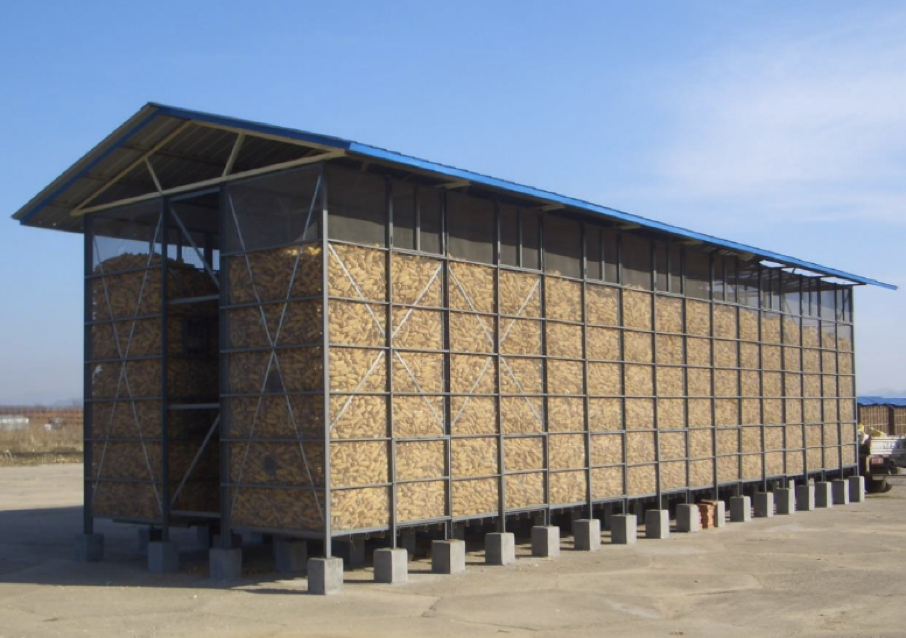
Photo Credit: Sinograin Chengdu Storage Research Institute/Mr. Lan Shengbin
Solution: Grain Loss Reduction Technology
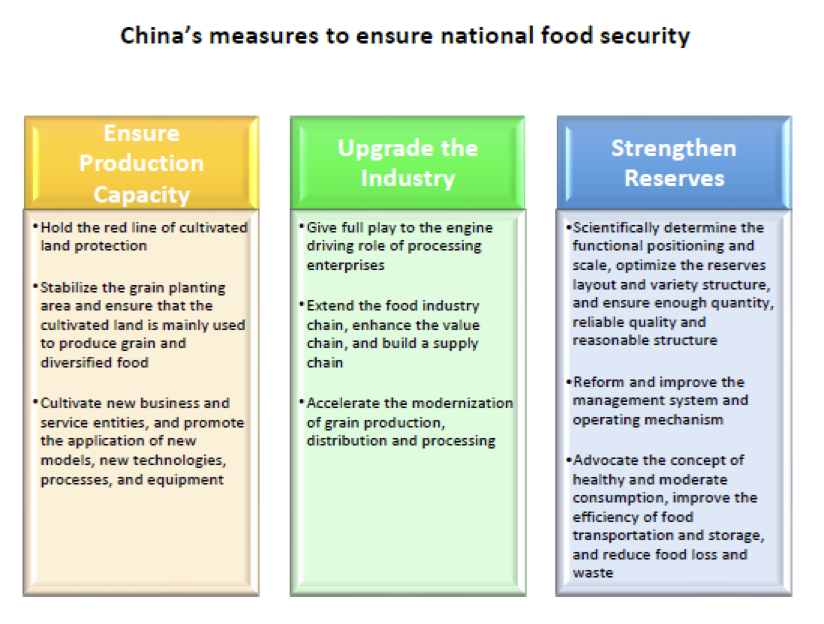
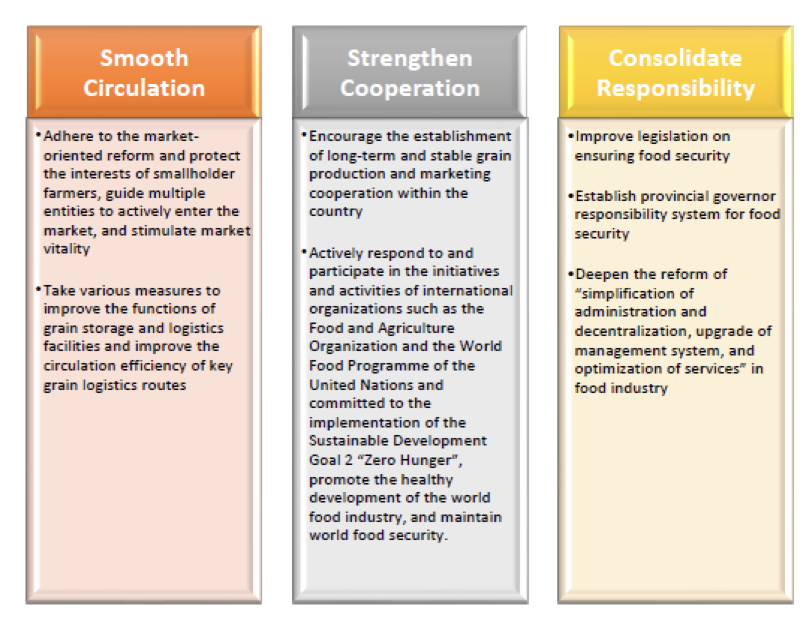
In China, to reduce farmers’ grain storage losses, it is generally required that the grain should be dry, full and clean. Another requirement is the separation of grains: 1) grains with insects or pest and those without, and 2) newly harvested grains and aged grains. Combined with different approaches, such as training and innovative methods, a series of facilities & equipment have been developed to strengthen smallholder farmer’s grain storage safety, such as color steel plate assembled granary, steel-framed rectangular granary, skeleton steel mesh round granary, cement-board assembled granary, embedded granary, polyethylene sheet assembled granary and PVC soft granary. In the north of China, based on the ecological characteristics of grain storage, the moisture content of corn is reduced to a safe level through natural ventilation with steel mesh warehouse, so as to realize the safe storage of grain. Steel-framed rectangular granary is the main solution. In other areas in China, color steel plate assembled warehouse is the main solution to store grains with safe moisture content.
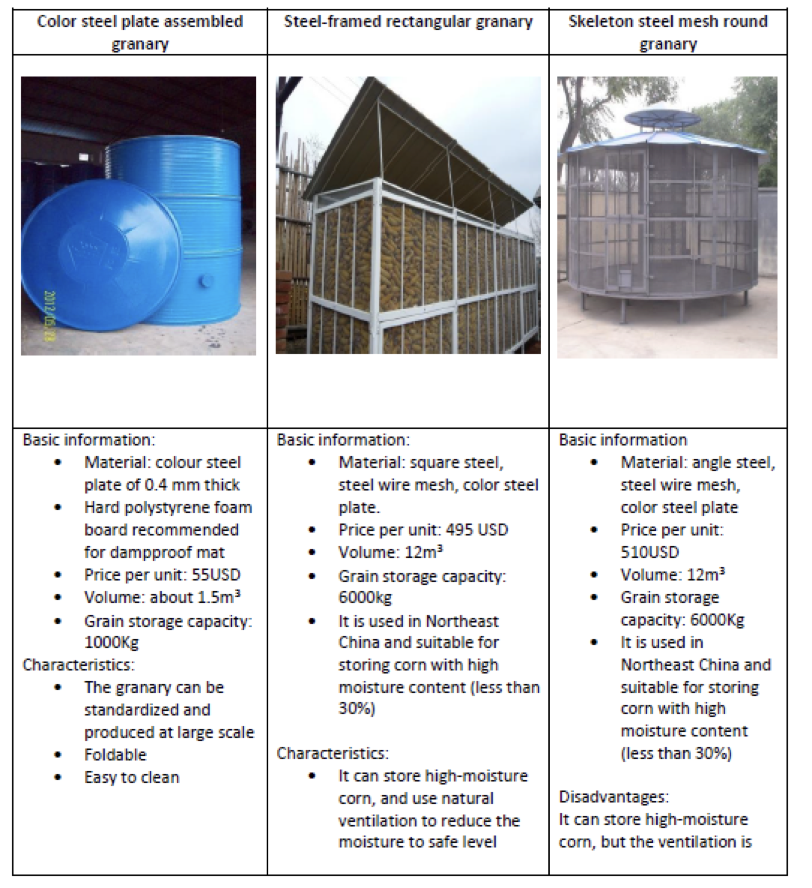

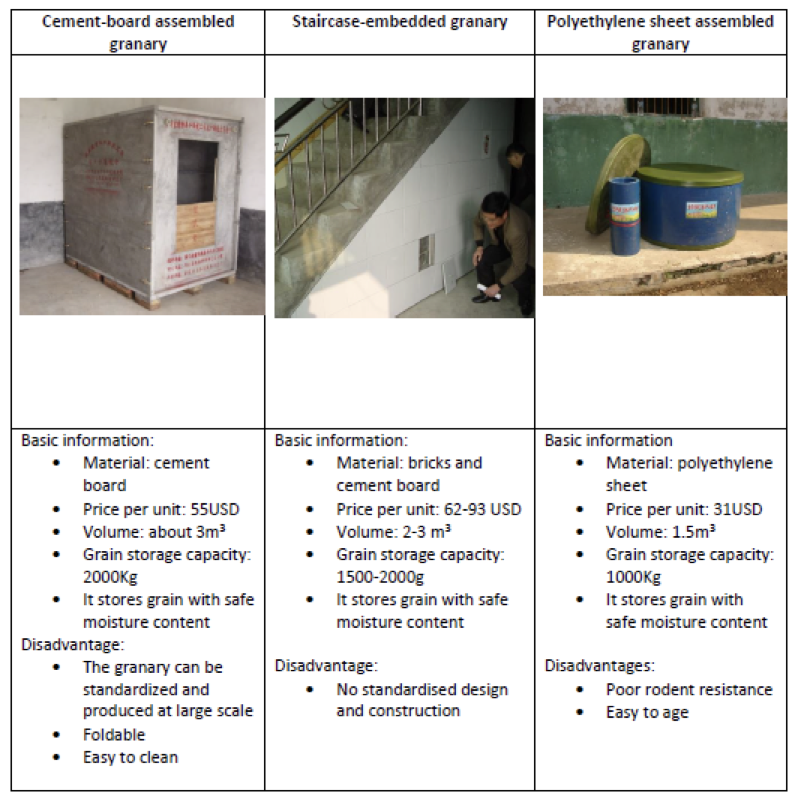
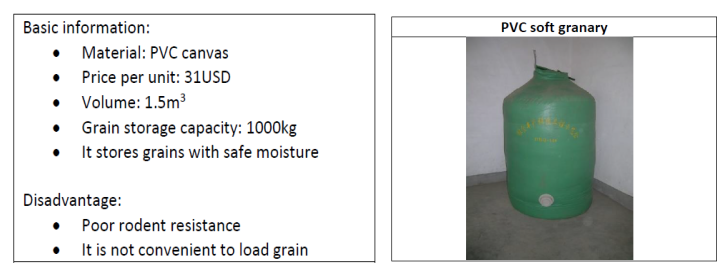
Grain storage pesticides for farmers have also been developed in China to reduce post-harvest losses during storage. As powerful pesticides, they cover broad insecticidal spectrum and are valid for a long period. The characteristics of these pesticides are high efficiency and low toxicity, which are in line with national health standards. Plants are used to prevent insert, such as prickly ash, tree leaves, calamus and wormwood, etc.
Information technology has also been developed to provide convenience to farmers, including farmers' grain storage expert consultation system, Hui Sannong App, and an “all-in-one-card” system for grain sales developed by SINOGRAIN Group.When the grain seller enters the granary of SINOGRAIN, an IC card is issued, and the card is used to complete all aspects of business from the acquisition and registration, quality inspection, weight inspection, settlement, capital payment,etc. This system enables a more transparent and efficient process for grain sales.
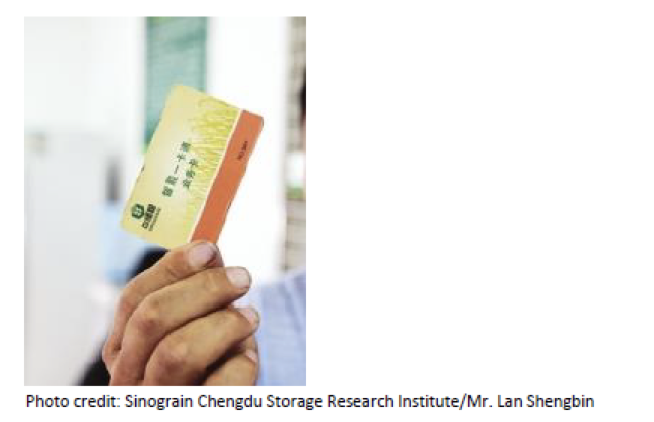
Effect of the Solution: The previous food crises and covid-19 have brought some lessons learned for developing countries on how to adopt various policies, strategies, and technologies for strengthening their national food securities. A few recommendations in the short, medium, and long term have been concluded for policy makers to cut PHL and therefore contribute to a more sustainable food system.
In the short term, it is recommended:
·To strengthen the activities of the Task Force on the free movement of goods and people .
·To implement complementary actions to support the Mechanism for monitoring of road harassment and cross-border flow and transhumance.
·To strengthen joint mission (for example in Sahel with CILSS, WFP, FAO FEWS NET) to assess market and consider the impact of COVID-19 on markets.
·To establish national social protection programs (social safety nets).
·To set up trade information offices at borders.
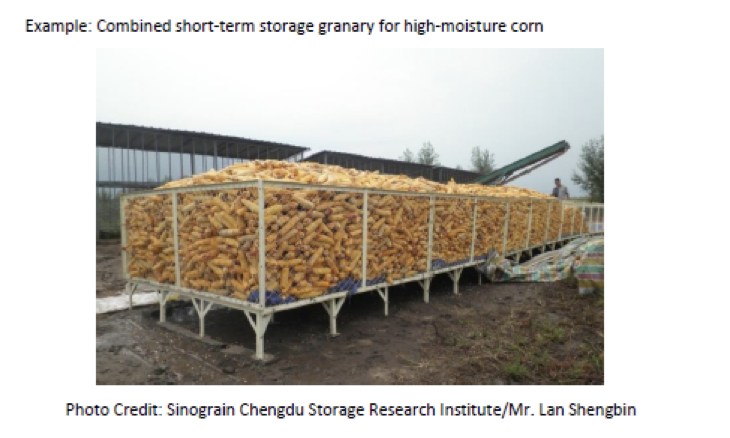
In the medium term, it is recommended:
· To strengthen the activities of the product transformation component, standards, and quality
· To revitalize the network of researchers and market analysts to take into consideration the
exogenous and endogenous shocks to the dynamics of the markets in the sub-region. In the long term, it is recommended:
· To stabilise and sustain the regional reserve system by:
i. ensuring proper functioning of governance tools and bodies, and by strengthening information and communication on rules, modalities, and organs of governance
ii. constructing the system step by step
iii.mobilising resources for funding the activities (from own resources, financial and technical partners), and by developing and implementing innovative funding tools (such as funding tools with the Bank for Investment and Development and Risk coverage systems).
iv. ensuring the concomitant reinforcement of the three lines of response (at local, national, and regional level) because they are interdependent, and by formalizing relations between reserves at three levels, especially between local storage and national security stock.
v. implementing tools (such as M&E system and ECOAGRIS in West Africa) which contribute to the transparency and efficiency of the regional reserve system.
vi. identifying the areas where performance can be improved and costs reduced (such as procurement, quality control, monitoring etc.)
vii. clarifying the goals of food reserves at each level, and the interactions among different types of storage progressively.
viii. establishing partnership with the private sector, which can increase efficiency, foster innovation, and provide additional source of financing.
Original Link:
Promotion of Sustainable Food System for Zero Hunger: Good Practice on Post-Harvest Loss Management from China and Africa
Category
Post-harvest Loss Management from China and Africa
Contributor
Post-harvest Loss Management from China and Africa
Country
Technical Solution

